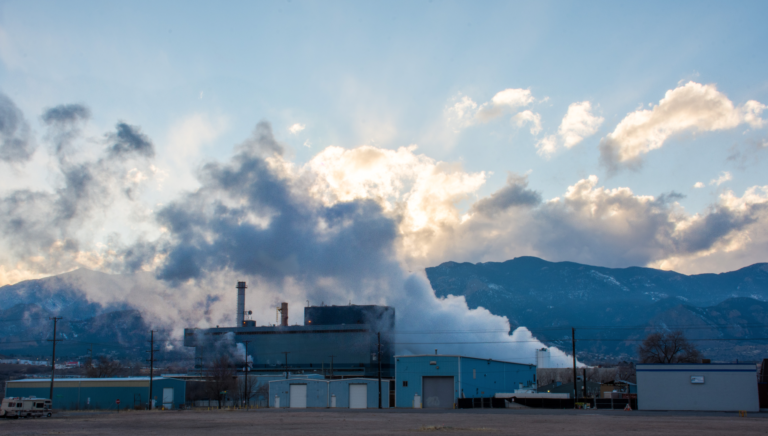本文转自《The Catalyst》发布的题为“Carbon Capture and Sequestration: The Answer to Climate Change?”的报道。
作者:Brandon Ewert
日期:2019.02.11
原文链接:http://catalystnewspaper.com/active-life/carbon-capture-and-sequestration-the-answer-to-climate-change/
Humans are releasing dangerous amounts of carbon dioxide into the atmosphere, and we are beginning to feel its effects. Weather is becoming more extreme, ice caps are melting, and oceans are acidifying. The Intergovernmental Panel on Climate Change continues to release reports that warn of the disastrous future that lies ahead if we collectively fail to act on climate change. It has also become clear that there is no single fix to climate change, and that we must implement a multitude of strategies in order to get the world’s climate back on track for future generations.
人类正向大气中释放出危险的二氧化碳,我们开始感受到它的影响。天气变得更加极端,冰盖融化,海洋酸化。政府间气候变化专门委员会继续发布报告,警告如果我们集体未能应对气候变化,未来将面临灾难性的未来。显而易见的是,气候变化没有单一的解决方案,我们必须实施多种战略,以便让世界的气候重新回到正轨。
One such strategy for mitigating our CO2 output is carbon capture and sequestration, or CCS. The goal of CCS is to capture CO2, either from point sources or from the ambient air, and store it where it cannot escape, essentially removing CO2 from our atmosphere. The most efficient way to implement CCS is at point sources, such as power plants. By installing CO2 scrubbers on smokestacks, much of the escaping CO2 is filtered out and ready to be transported and stored underground where it can’t escape. A major advantage of this strategy is that current power plants can be retrofitted with this technology. However, CO2 scrubbers are expensive, raising the question of whether that money should be spent to retrofit a coal-powered power plant or invested in our transition to renewable energy.
减少二氧化碳排放量的一种策略是碳捕获和封存,或CCS。 CCS的目标是从点源或环境空气中捕获二氧化碳,并将其储存在无法逃逸的地方,从根本上消除大气中的二氧化碳。实施CCS的最有效方式是点源,例如发电厂。通过在烟囱上安装二氧化碳洗涤器,大部分逸出的二氧化碳被过滤掉,随时可以运输并储存在无法逃逸的地下。该策略的一个主要优点是可以使用该技术对当前的发电厂进行改造。然而,二氧化碳洗涤器价格昂贵,这就提出了这样一个问题:这笔钱是否应用于改造煤电厂或投资于我们向可再生能源的过渡。

Photo by Nick Penzel
Scrubbing CO2 from point sources like smokestacks is one thing, but how do we sequester the immense amounts of CO2 that have already been emitted into our atmosphere? Many biological processes and ecosystems naturally sequester and store CO2, including forests, wetlands, and oceans. It should remain a priority to protect these natural CO2 stores, but clearly human activity has exceeded natural bounds.
从烟囱等点源清洗二氧化碳是一回事,但我们如何隔离已排放到大气中的大量二氧化碳?许多生物过程和生态系统自然地隔离和储存二氧化碳,包括森林,湿地和海洋。它应该仍然是保护这些天然二氧化碳储存的优先事项,但显然人类活动已超过自然界限。
A more recent and controversial CCS technology, named direct air capture, has entered the conversation. This strategy aims to filter mass amounts of ambient air through a filter in order to remove CO2. While this technology seems logical and exciting, it has been expensive in its current state. The sheer amount of air that must be filtered in order to access the dilute amount of CO2 in our atmosphere is immense, and requires an incredible energy input, often from fossil fuels. We should not regard direct air capture as an answer to the excess of CO2 in our atmosphere; we should instead see it as an exciting technology that is still in its infancy and requires additional research and development.
一种名为直接空中捕获的最新和有争议的CCS技术已经进入对话。该策略旨在通过过滤器过滤大量的环境空气,以去除CO2。虽然这项技术似乎合乎逻辑且令人兴奋,但它目前的状态却很昂贵。为了获得大气中稀释的二氧化碳,必须过滤的大量空气是巨大的,并且需要通过化石燃料提供令人难以置信的能量输入。我们不应该将直接空气捕获视为我们大气中二氧化碳过量的答案;我们应该把它视为一种令人兴奋的技术,仍处于起步阶段,需要进一步的研究和开发。
Carbon capture and sequestration technology can be used to both help and hurt the environment. It turns out that injecting carbon dioxide into oil fields can release additional crude oil that would otherwise be nearly impossible to extract. This strategy is called enhanced oil recovery, and is used to recover an additional 10–15 percent of crude oil yields in large-scale oil operations. As we decide how to develop and implement CCS technology in the future, it is important to consider the ways in which it can be used to help solve the climate crisis and also contribute to it.
碳捕获和封存技术可用于帮助和伤害环境。事实证明,向油田注入二氧化碳可以释放额外的原油,否则几乎不可能提取。这种策略被称为提高石油采收率,用于在大规模石油作业中再回收10-15%的原油产量。在我们决定如何在未来开发和实施CCS技术时,重要的是要考虑它如何用于帮助解决气候危机并为此做出贡献。
Carbon capture and sequestration technology has the potential to contribute to the climate change solution, but not in its current state. An immense amount of collaboration between researchers, engineers, and scientists is necessary if CCS is to become a viable and cost-effective means of addressing the excess of CO2 in our atmosphere. Still, CCS marks an exciting time in which human ingenuity is mimicking natural processes in order to address the largest and most looming problem facing the planet.
碳捕获和封存技术有可能为气候变化解决方案做出贡献,但目前尚未实现。如果CCS要成为解决大气中二氧化碳过量的可行且具有成本效益的手段,研究人员,工程师和科学家之间必须进行大量合作。尽管如此,CCS标志着一个激动人心的时刻,人类的聪明才智正在模仿自然过程,以解决地球面临的最大和最迫在眉睫的问题。
Brandon Ewert
Brandon, class of '20, is an Environmental Science major focused on local and global issues pertaining to climate change, climate justice, and personal fitness.
Brandon Ewert
Brandon,20年级,环境科学专业,专注于与气候变化,气候正义和个人健身有关的地方和全球问题。